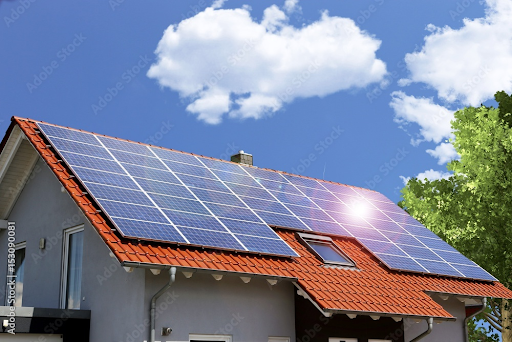The Average Cost of Solar Panels
Have you considered installing solar panels in your home?
As the world shifts to renewable energy, owning solar panels will become a valuable commodity. You’ll not only help the environment but also save money on your electricity bill. Do you know the average cost of solar panels? Knowing how much solar panels cost will be a big part of figuring out whether or not you can pay for them and have them installed. Don’t let the cost be a deterrent to you. Continue reading to learn how to save money on solar panels and to learn why they’re worth the investment.
Factors That Affect the Cost
Over the years, the average price of solar panels has gone down a lot, making them easier for people all over the world to buy. Factors that can affect the solar panel cost include the size and type of panel and the location. Also, climate, local regulations, and solar panel incentives offered by the government in the area can affect the cost. Read on to learn more.
Size and Type
The size and type of solar panel that you install will make a big difference in the average cost of the system. On average, a big residential or commercial solar panel system costs just under $3 per watt. While a smaller residential system can cost more than $4 per watt. Smaller solar panel systems with 4–8 kW usually cost more per watt and take up more space to build, which can lead to higher labor costs. You can also find specialty-constructed solar panels that offer increased cell efficiency. This means they can convert more solar energy into electricity. This is while also requires smaller footprints and installation areas. All of these things will affect the total cost, which will make solar panel systems cheaper and help lower the total cost of ownership in the long run.
The Location
The cost of solar panels varies greatly depending on the location. In the United States of America, the average cost of solar panels is around $2.80 per watt of power capacity. This translates to approximately $13,000 – $19,000 for a 5-kilowatt solar system. However, for rural areas or off-grid properties, the cost rises to around $4 per watt, and the total cost of such a system can be as much as $30,000. For example, in a sunny rural area in California, the average cost per watt is $4.58, and the total cost of a 5-kilowatt solar system is estimated to be up to $22,900. On the other hand, in states like New York, the cost per watt for a solar system is around $3.52, and the total installation cost is around $17,600.
The Climate
Solar panels can be a great way to reduce the number of carbon emissions released into the atmosphere due to their ability to generate clean and renewable electricity. In cold climates, solar panels are typically more expensive as they need to be able to withstand extreme temperature fluctuations. Similarly, in hot climates, air conditioning demand can increase solar system costs due to the additional power required. In climates with minimal sunlight, solar system costs may be higher since fewer hours of peak daylight are available.
Local Regulations
The average cost of solar panels can vary depending on the type of device, the size of the installation, and local regulations. In areas with pressure from the government to reduce energy costs, panels may be available at a discounted rate or below the regular cost. All of these things will affect the total cost, which will make solar panel systems cheaper and help lower the total cost of ownership in the long run. Regulations can also limit the size of a system that can be installed, thus reducing the cost. In many areas, a licensed contractor is required to inspect the installation, which can add to the overall costs. Also, there may be different rules for installation depending on where you live. For example, in some places, you have to use certain materials or get permission from an administration. All of these factors should be taken into account when calculating the average cost of solar panels.
Weighing the Benefits of Solar Energy Over Cost
Since solar technology has gotten better over time, the amount of power each panel makes has gone up while the cost has gone down. While solar energy has become more affordable, it is still important to weigh the benefits against the cost. The primary benefit of solar energy is its environmental impact. It reduces air pollution and electricity bills and is renewable. The cost of installing and maintaining a solar array is also worth considering. But in the long run, you can save a lot of money, and it feels great to use energy that is good for the earth. Ultimately, the decision to invest in solar energy must be based on careful consideration of both cost and benefits. By clicking this link, you will be provided with in-depth information regarding solar panel systems.
Financing Options
Purchase, loan, lease, and power purchase agreements are all ways to pay for residential or business solar projects. A purchase offers low long-term savings, as the homeowner or business will own the system and receive all of the long-term cost savings. People who don’t have a lot of money can spread the cost of the system out over time with a loan, but they still get the long-term benefits of having the system. A lease allows for no upfront cost but does have lower long-term savings. A power purchase agreement pays for the solar system’s energy production instead of the hardware and can off competitive rates of return. No matter the financing option, solar panels are always a smart investment.
Learning the Average Cost of Solar Panels
The Average Cost of Solar Panels has decreased dramatically, and it is now more affordable than ever to make the green switch. An affordable solar panel system can help reduce your utility bills, provide grid independence, and benefit the environment. Make your move today and contact a solar installation expert to get started. For more informative topics, check out the rest of our site!

